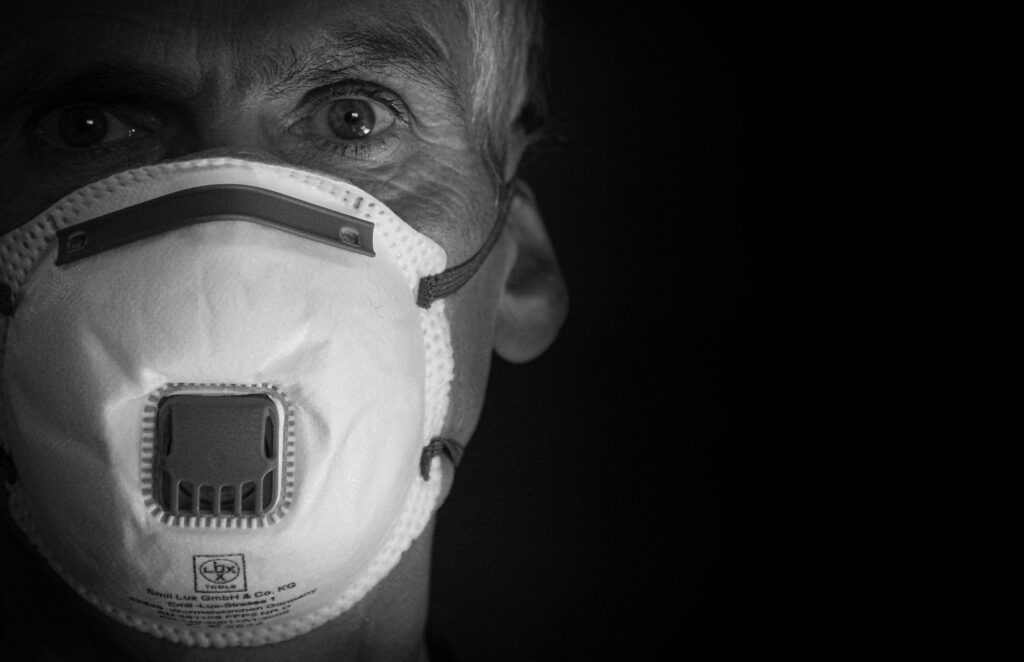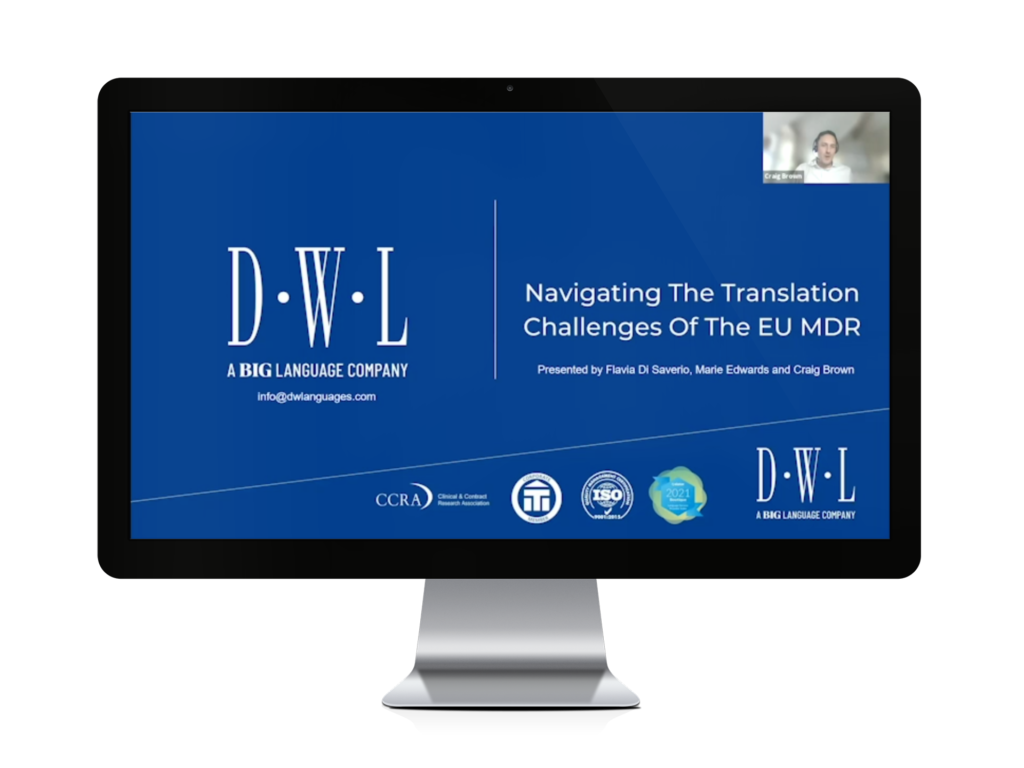
COVID-19 has changed the world in all kinds of ways. But public perceptions of clinical trials have remained stubbornly similar. New research shows that attitudes have barely changed from before the pandemic, and that has major consequences for those recruiting for clinical trials, especially those related to COVID-19.
This article explores what lies behind these stubborn public perceptions and explores how this unique moment could help us to shift them in future.
COVID-19 has Changed the World
C02 emissions have fallen by 8%, oil prices have crashed1, Zoom usage has soared2 and our homes have become our offices.
As various exit strategies play out across the globe, we’re starting to realise that the “new normal” isn’t the same as the “normal” we left behind. The “new normal” is a strange place where children play in chalk boxes, restaurants serve customers in booths, and masks are compulsory on public transport. We’re quickly realising that getting back to the normal we long for is only going to be achievable through medical breakthroughs like vaccinations, better treatments and cures.
But medical breakthroughs aren’t cheap or quick to deliver.
Accelerating the Slow and Winding Road to New Treatments
The path to a marketed drug is long, exhaustive and expensive. It’s a journey through molecule discovery, preclinical testing and robust clinical trials and evidence gathering with all their complications and regulatory hurdles3. Typically, vaccines and novel small molecule drugs take 10 to 15 years to develop.
Even before COVID-19, efforts were being made to accelerate drug development. Better cooperation was becoming more common, with many research publications featuring collaborations between pharma, biotech and academics4. ‘Patient-centricity’ was taking centre-stage in efforts to improve trial efficiencies – a much-needed change in an industry where 50% of trials are delayed due to patient recruitment and 85% of trials fail to retain enough patients5. Even the traditionally rigid regulatory agencies had started introducing measures to speed up development6. Despite all these efforts, it’s uncertain whether there’s been any increase in new drug approvals or a reduction in total development times.
In the few months since the pandemic started, numerous novel pharmaceutical industry partnerships have been established that would have been unlikely beforehand. Regulatory bodies have eased clinical trial mandates. Processes and rule changes have been implemented within days, rather than years. There have also been unprecedented patient recruitment efforts, with heads of state repeatedly appealing to entire nations for clinical trial volunteers7.
This isn’t the first crisis to shake up the clinical trial industry. In 2016, the Zika virus vaccine went from lab to first trial volunteer in 190 days, a feat that felt ground-breaking at the time8. But it’s nothing compared to the achievements of the newly-formed collaboration between Chinese researchers, Kaiser Permanente Washington Health Research Institute and Moderna Therapeutics. With their experimental COVID-19 vaccination, they’ve achieved the same feat in just 65 days9.
By mid-April, 598 novel coronavirus-related clinical trials had been approved in China, peaking at 32 in one day10. The FDA, a notoriously stringent and robust agency, were responding to proposals concerning COVID-19-related drug development in just one day through their Coronavirus Treatment Acceleration Programme (CTAP)11. Oxford University also recruited 1102 participants at unprecedented speed for their clinical trial investigating another experimental COVID-19 vaccination, ChAdOx1 nCoV-1912.
The initial signs are that drug developments for COVID-19 have benefited from these changes and these efforts are to be applauded. But the broader implications are yet to be quantified. Unavoidably, the development of drugs for other diseases has been affected. Nearly 100 pharmaceutical companies have reported disruption to a clinical trial as a result of the coronavirus pandemic13. Without evidence from pivotal clinical trials, new drug filings will be delayed and our understanding of treating diseases hampered. Important new medicines and scientific breakthroughs will take longer to reach health systems and patients. Research funding has also been hit. Charities like Cancer Research UK have lost a quarter of their donated income due to shops staying closed and fundraising events being cancelled. This has drastically reduced their R&D spend14.
Breaking Down Barriers to Clinical Trials is Key
Procedural efficiencies are helping to speed up drug development, but societal barriers need to be overcome too. In 2010 the Clinical Research Scale (CRIS) was developed to measure the likelihood of people participating in a clinical trial. Using constructs from the theory of reasoned action (TRA) to understand participation in HIV vaccine trials15, TRA proposes that the strongest predictor of voluntary behaviour is a person’s behavioural intention, which is heavily influenced by community attitudes and subjective norms16,17.
Current public perceptions about how ‘sensible’ and how ‘normal’ it is to join a clinical trial, may be working against efforts to recruit and retain trial participants.
Early COVID-19 trials faced all too familiar challenges with recruitment, public beliefs being one of the common barriers. China-based trials struggled to recruit the number of participants they needed. In fact, at least 40 trials had to be cancelled by mid-April10. Gilead, a major player in the race to find a treatment for COVID-19, cancelled two Phase III remdesivir trials, citing that the COVID-19 epidemic had been controlled so well in China that no eligible patients could be enrolled at the time18,19. Professor Sheng Luo, a biostatistics expert at Duke Clinical Research provided a more in-depth assessment of the reasons behind recruitment difficulties. Luo identified logistical factors around inclusion criteria, exclusion criteria and site location, before describing ingrained, cultural barriers ubiquitous to all trial designs. People in China simply preferred to trust in their own immune systems, rather than risk the unpredictable side-effects of medicines20.
Yet fast-forward into March and the Oxford University trial of experimental vaccination ChAdOx1 nCoV-19 recruited over 1000 participants in record time21. Is it possible that the global pandemic has not only changed trial logistics, but also the public’s willingness to join a clinical trial?
Have Public Perceptions of Clinical Trials Changed?
We surveyed over 1000 British people to see if positive press around clinical trials and the pharma industry’s role in tackling COVID-19 had had a positive impact on public perceptions of clinical trials22.
This new research showed that only 57% of men and 44% of women were willing to participate in COVID-19 trials22. This is comparable to numbers reported by the National Institute for Health Research (NIHR) before the outbreak (there was a 47% willingness to participate across both demographics within a UK subpopulation).
Barriers to, and drivers for, trial participation also appeared to align across these samples, agreeing that motivations to participate centred on the potential benefits to one’s own health or that of close friends and family22,23. The biggest barriers to participation were perceived risk of harm and receiving an ‘unknown treatment’, alongside concerns over time commitments and time off work. These were similar in the FAZE-led research.
Figure 1. Breakdown of the openness to participate in a COVID-19 clinical trial by age in the UK22
Across the board, the new research consistently demonstrated that attitudes towards clinical trials have not been shifted by COVID-19. Variations in research are more easily explained by nuances in the disease than a shift in public attitudes. For example, the over-60’s have often been cited as the most at-risk age group for serious/deadly COVID-19 infections24. The FAZE-led research found that over 55s were least willing to participate in COVID-19 trials, whereas the NIHR research that found over 75s were least willing to take part in clinical research22,23.
If public perceptions haven’t changed, how can we explain Oxford University’s recruitment success? Matt Hancock, the UK Secretary of State for Health and Social Care, took to the BBC to appeal for trial volunteers during the channel’s daily COVID-19 updates25. During the pandemic, BBC viewing figures for the UK Daily Government Briefings have soared, with as many as 94% of the UK adult population (and 86% of younger people) tuning in to these updates at some point26. Mr Hancock even publicly announced that he had donated antibodies to a clinical trial investigating whether blood plasma transfusions from people who’d been infected could help treat people suffering with COVID-19. He went on to urge the public to sign up to similar trials. In many countries, this sort of direct-to-consumer trial advertising is prohibited. Even in those that do allow it, a daily audience of millions of potential viable trial candidates is unheard of. So the success of the Oxford University’s COVID-19 vaccination trial may simply be explained by the sheer reach of these daily broadcasts coupled with the collective impact of this particular infectious disease.
Public Understanding of Clinical Trials Remains Poor
The general public have a poor understanding of how clinical trials work. They’re also negatively biased towards them. As one article put it, “the only intersection between research and general interest is when things go wrong”27.
One of the most important things is the negative public perception of clinical trials.
Across the board, risk of harm is the clearest barrier to trial enrolment. But is this really justified? Let us consider actual serious adverse events (SAEs) as a direct consequence of a trial.
A systematic review of 475 Phase I studies shows that although participants on these trials can expect mild-to-moderate adverse events, there is actually a median of zero adverse events per 1000 treatment group participants per day of monitoring28. Of course, there is plenty of research which counters this, showing that expected SAE rates are higher. However, the general public’s belief that trials carry an inherent high level of risk appears to be unfounded29.
You Can Change Everything Except Public Perceptions of Clinical Trials
Recent events have proven that, in a short space of time, you can change processes, form collaborations and broadcast messages to the public. But even in a global pandemic, changing public perceptions of clinical trials is much harder.
When you look at how the media have reported trial failures in the past, and combine this with the simmering mistrust in Big Pharma, it’s no surprise that the baseline perception of trials is poor. Flagship trial failures such as the ‘Elephant Man’ trial were latched on to by the media and have strongly influenced the way people think about trials30. Ultimately, this has left the pharmaceutical industry fighting an uphill battle to get people to participate.
To compound these negative, headline-grabbing stories, more and more people are being exposed to ‘fake news’. Just take the UK COVID-19 vaccine trial as an example. One of the first volunteers to receive the vaccine was reported to have died and the story spread like wildfire over social media, despite it being completely untrue. Trustworthy articles, including one by The Guardian, were written to try and dispel the rumours, but there is no way of knowing how many people read and believed the lies31. If left uncontrolled, these fake news stories will only harden the attitudes that clinical trials are competing against. Indeed, the latest research on social media to date shows that false information spreads faster and further than true information – demanding better systematic approaches to tackle misinformation and key roles that scientific and medical experts may play on social media platforms32.
During a pandemic, behaviours generally lean towards self-preservation (and the preservation of your loved ones). So you’d think that clinical trials would offer hope of preservation, especially when there are no treatment options available. However, misinformation about clinical trials counters these instincts, leading to a psychological conflict. On the one hand, clinical trials offer a potential prophylactic or treatment against the disease. But on the other, they could be another failed and dangerous trial like ones they’ve read about in the past – given the tendency to only remember bad news stories.
There also appears to be a disconnect between the concept of medical and scientific breakthroughs and the clinical research required to make one happen. It’s common for the media to report medical/scientific breakthroughs as positive news and over-promise real-world potential outcomes, but when any negative news arises, the narrative switches back to the “clinical trials” setting. In many cases, this is a distinction that does not exist. It’s important to make the public aware that many of the medical breakthroughs they take for granted are from the hard-won efforts of clinical trials.
Taking Steps Towards an Improved Public Perception
Based on the research conducted by Havas Lynx Faze and Day One Strategy, there are a number of logical strategies which, if implemented immediately, may reduce societal barriers to clinical trial recruitment and retention22.
| Strategy | Why implement? |
| Emphasise altruistic motivators | The way COVID-19 passes from person to person has made people instinctively consider their own actions to protect other people. We can tap into these feelings of increased social responsibility and community spirit. Everyone has a friend or family member that is in a vulnerable group and this can help motivate people to act. |
| Build on trust | With high levels of fake news circulating, communication needs to come from reputable sources. As scientists, our voices are likely to be trusted even more than normal. |
| Harness fear in positive ways | Safety concerns are obviously heightened due to COVID-19. But fear can be used positively if it can be channelled into getting people to act. In a world where people feel powerless, trial participation can help them take back control. |
| Emphasise the role of clinical trials | It’s common for the media to report medical/scientific breakthroughs as positive news, but “clinical trials” are only ever discussed when negative news arises. We need to challenge this disconnect and emphasise that the two are intimately interconnected. We need the narrative to change so people realise that the medical breakthroughs they celebrate are the direct result of clinical trials. |
Conclusion
In a short space of time, the COVID-19 pandemic has proven that people around the world can change the way they live. It’s also proven that, in the pursuit of medical breakthroughs, you can speed up processes, form new collaborations and broadcast messages to the public. But even in a global pandemic, public perceptions of clinical trials remain stubbornly familiar.
It’s become clear that to change perceptions, people need to be better informed about clinical trials. So while “health literacy” has long been considered important in improving clinical outcomes, surely “trial literacy” is also equally important.
For “trial literacy” to improve, public perceptions of clinical trials must change. And that requires a concerted effort by all of us to build on the successes and platform offered by the COVID-19 pandemic. We can foster positive perceptions of medical/scientific breakthroughs and make the argument that they can only be achieved through clinical trials.
By building positive perceptions we can help to speed up the process of fighting back against COVID-19. But more than that, we can break down barriers to future clinical trial recruitment and broadly benefit future drug development across a whole range of conditions.
Extracted from the Journal for Clinical Studies: www.jforcs.com
References
- https://finance.yahoo.com/quote/oil/, visited on 10 Jun 2020
- https://finance.yahoo.com/quote/ZM /, visited on 10 Jun 2020
- Corr P, Williams D. The Pathway from Idea to Regulatory Approval: Examples for Drug Development. National Academies Press (US) (2009) available at: https://www.ncbi.nlm.nih.gov/books/NBK22930/, visited on 10 Jun 2020
- https://elrig.org/how-will-innovation-and-collaboration-drive-the-future-of-drug-discovery/, visited on 10 Jun 2020
- http://www.pharmafile.com/news/511225/clinical-trials-and-their-patients-rising-costs-and-how-stem-loss, visited on 10 Jun 2020
- Darrow JJ, Avorn J, Kesselheim AS. FDA Approval and Regulation of Pharmaceuticals, 1983-2018. JAMA. 323(2):164–176 (2020). doi:10.1001/jama.2019.20288
- https://www.telegraph.co.uk/politics/2020/04/03/coronavirus-testing-uk-matt-hancock-government-plan-update/, visited on 10 Jun 2020
- https://www.sciencemag.org/news/2020/03/record-setting-speed-vaccine-makers-take-their-first-shots-new-coronavirus, visited on 10 Jun 2020
- https://www.cnbc.com/2020/05/22/moderna-vaccine-researcher-it-mind-boggling-to-be-done-in-2020.html, visited on 10 Jun 2020
- https://www.globaltimes.cn/content/1185915.shtml, visited on 10 Jun 2020
- https://www.fda.gov/drugs/coronavirus-covid-19-drugs/coronavirus-treatment-acceleration-program-ctap, visited on 10 Jun 2020
- https://www.sciencefocus.com/news/oxford-coronavirus-trials-heres-what-we-know-so-far-about-the-covid-19-vaccine/, visited on 10 Jun 2020
- https://www.biopharmadive.com/news/coronavirus-clinical-trial-disruption-biotech-pharma/574609/, visited on 10 Jun 2020
- https://www.theguardian.com/science/2020/apr/07/cancer-research-uk-to-cut-funding-for-research-by-44m, visited on 10 Jun 2020
- Frew PM, Hou SI, Davis M et al. The likelihood of participation in clinical trials can be measured: the Clinical Research Involvement Scales. J Clin Epidemiol. 63(10):1110‐1117 (2010). doi:10.1016/j.jclinepi.2009.12.002
- Pillay D, Wassenaar DR. Racial differences in willingness to participate in HIV prevention clinical trials among university students in KwaZulu-Natal, South Africa. South African Journal of Psychology, 48(1), 112–128 (2018). https://doi.org/10.1177/0081246317708094
- Sheppard BH, Hartwick J, Warshaw PR. The theory of reasoned action: A meta-analysis of past research with recommendations for modifications and future research. Journal of Consumer Research, 15, 325–343 (1988).
- https://www.clinicaltrialsarena.com/comment/gilead-remdesivir-covid-19-china-trials/, visited on 10 Jun 2020
- https://clinicaltrials.gov/ct2/show/NCT04257656, visited on 10 Jun 2020
- HTTPS://WWW.OUTSOURCING-PHARMA.COM/ARTICLE/2020/03/04/CORONAVIRUS-CLINICAL-TRIALS-FACE-PROBLEMS-WITH-RECRUITMENT, visited on 10 Jun 2020
- https://www.sciencefocus.com/news/oxford-coronavirus-trials-heres-what-we-know-so-far-about-the-covid-19-vaccine/, visited on 10 Jun 2020
- http://trialhealth.org/2020/04/clinical-trials-talking-to-patients-during-a-pandemic/, visited on 10 Jun 2020
- https://www.uhs.nhs.uk/Media/Southampton-Clinical-Research/Marketresearch/Engaging-for-increased-research-participation-full-report-v2.pdf, visited on 10 Jun 2020
- http://www.euro.who.int/en/health-topics/health-emergencies/coronavirus-covid-19/statements/statement-older-people-are-at-highest-risk-from-covid-19,-but-all-must-act-to-prevent-community-spread, visited on 10 Jun 2020
- https://www.telegraph.co.uk/politics/2020/04/03/coronavirus-testing-uk-matt-hancock-government-plan-update/, visited on 10 Jun 2020
- https://www.prolificnorth.co.uk/news/broadcasting-news/2020/05/audience-rises-bbc-faces-ps125m-cost-covid-19, visited on 10 Jun 2020
- https://pharmaphorum.com/r-d/public-perception-being-barrier-clinical-trial-participation/, visited on 10 Jun 2020
- Johnson RA, Rid A, Emanuel E, Wendler D. Risks of phase I research with healthy participants: A systematic review. Clin Trials. 13(2):149‐160 (2016). doi:10.1177/1740774515602868
- Fisher JA, McManus L, Cottingham MD, Kalbaugh JM, Wood MM et al. Healthy volunteers’ perceptions of risk in US Phase I clinical trials: A mixed-methods study. PLOS Medicine 15(11): e1002698 (2018). https://doi.org/10.1371/journal.pmed.1002698
- https://www.independent.co.uk/life-style/health-and-families/health-news/the-drug-trials-that-went-wrong-a6814696.html, visited on 10 Jun 2020
- https://www.theguardian.com/world/2020/apr/26/uk-coronavirus-vaccine-trial-subject-doing-fine-online-death-rumours-elisa-granato, visited on 10 Jun 2020
- https://www.theatlantic.com/technology/archive/2018/03/largest-study-ever-fake-news-mit-twitter/555104/, visited on 10 Jun 2020







